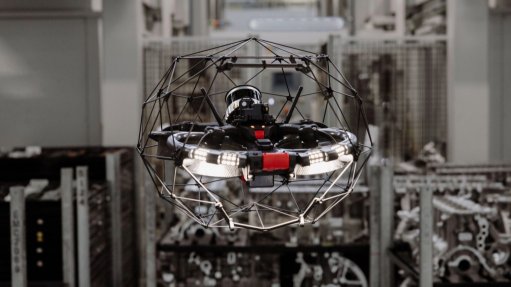The future is bright for renewables
It is hard for people to appreciate the history of renewables if they were not there at the beginning.
Renewables started way before the large roll-out we have seen since 2012. Back then, it was a sort of hobby for enthusiasts, academics and experts. In fact, in the late 1970s, South Africa was already testing solar panels and wave technologies, with an example of this being the pioneering work that was undertaken at Stellenbosch University.
The first-ever conference paper that I delivered, in 1994, when I was still a novice, was at a sustainable energy conference that was held in New York. I was invited to the conference at the behest of Dieter Holms, one of the founders of the Sustainable Energy Society of Southern Africa. The conference served as my introduction to what was then largely regarded as a Cinderella industry in South Africa because State-owned power utility Eskom, as a behemoth with multiple coal-fired plants, dominated the country’s electricity landscape. The utility is still the dominant player on the local electricity landscape, but the world is changing fast.
I have had the lovely privilege of witnessing the progress of renewables from 2005 until now. It was during this period that policy impetus was given to utility-scale renewables. Foreign financiers assisted South Africa’s Department of Energy in conducting many studies on renewable-energy technologies, feed-in tariffs and other technical issues related to the integration of renewables into the energy mix.
Even though Eskom was immersed in coal-fired power plants, to its credit, by the mid-1990s, it was already mulling over large concentrated solar plants (CSPs). The utility’s own engineers produced designs for a large solar tower project. This was meant to be a pilot project aimed at enabling Eskom to learn by doing. Large CSPs fitted well with Eskom’s paradigm of big plants and baseload electricity, as the utility was looking at molten storage capacity for its CSP plant. However, the utility is yet to build its own CSP.
Meanwhile, independent power producers (IPPs) have, under the highly successful Renewable Energy Independent Power Producer Procurement Programme (REIPPPP), stolen the lead from Eskom; they have implemented large CSP projects and more are on the way. We could easily see up to 1 000 MW of CSP capacity, if the full renewables capacity of 19 GW laid out in the Integrated Resource Plan 2010 is installed.
The REIPPPP has demonstrated how quickly renewables plants can be established – CSP projects can be connected to the grid in less than three years and other technologies within two years.
The REIPPPP’s success has changed the way renewables are being perceived. They have shed their Cinderella status and entered the mainstream and are now attracting new expertise and investment. The current situation is a far cry from 1994, when, all over the world, renewables had to compete fiercely against a well-organised fossil fuel lobby. Renewables are not a panacea, but they are changing the way we think about energy systems and services.
While, in the early days, renewables were expensive and did not have grid parity, which meant that they needed to be heavily subsidised, the sheer scale of the renewables roll-out that has taken place across the globe has dramatically reduced the prices of renewables, especially photovoltaics, which, over time, will need even lower levels of subsidies.
In South Africa, subsidies for renewables have been indirect and taken the form of State guarantees designed to honour payments due to renewables IPPs in the event of Eskom defaulting as more and more large-scale renewables are connected to the grid and sell their power through the utility.
However, one must not ignore the fact that renewables, as intermittent sources of electricity, require backup when, for example, the wind does not blow or the sun does not shine. That backup power has to come from conventional sources.
Intermittence will also pose a real challenge once higher thresholds of renewables are integrated into the grid. But these are technical issues that can be fixed, as renewables, in any case, require a different management mindset to what utilities are used to.
It is true that, while there are costs associated with dealing with grid stability and variability, renewables also save on costs. Renewables are decentralised and located where the resource is abundant, but these are also areas where electricity has to be sourced from sources that are quite far from where the demand is. If you transmit electricity over long distances, you lose energy through the wires.
Thus, decentralised power offers savings, as it reduces transmission losses, and a proper geographic location of renewables can also better place them to meet electricity demand during the day and at night. There are hidden costs associated with renewables, just as there are savings, and it is always best to argue from the point of net benefits or costs, rather than presuppose that costs are always inherit in renewables technologies and be less generous when highlighting their benefits.
I say the future of renewables is bright because they have long since moved from being a technology for enthusiasts and hobbyists, just as drones once were, to being sources of new power that are not only connected to the large grids but are also directly available to households. As solar, wind and storage technologies become cheaper, households will, in future, either have their own standalone system or be part of a neighbourhood microgrid.
This is already materialising and it is only a matter to time before we see some form of mass adoption. Smaller modular technologies like renewables and other cleaner technologies are more amenable to being tailored to the needs of consumers, as they drive entrepreneurs to meet those needs through innovative delivery and energy service models. Large centralised power systems, by their nature, have low levels of responsiveness to customer needs and limited capacity to innovate.
Holms should be proud of himself, as he held the future before us, although many either mocked him or did not believe that his idea of the future would be possible. Today, the naysayers cannot say the same. The world of renewables, energy storage and smart grids is changing so fast that we cannot tell exactly what it will look like in the future, but we can safely say that the future world of renewables will not look like today’s.
Article Enquiry
Email Article
Save Article
Feedback
To advertise email advertising@creamermedia.co.za or click here
Comments
Announcements
What's On
Subscribe to improve your user experience...
Option 1 (equivalent of R125 a month):
Receive a weekly copy of Creamer Media's Engineering News & Mining Weekly magazine
(print copy for those in South Africa and e-magazine for those outside of South Africa)
Receive daily email newsletters
Access to full search results
Access archive of magazine back copies
Access to Projects in Progress
Access to ONE Research Report of your choice in PDF format
Option 2 (equivalent of R375 a month):
All benefits from Option 1
PLUS
Access to Creamer Media's Research Channel Africa for ALL Research Reports, in PDF format, on various industrial and mining sectors
including Electricity; Water; Energy Transition; Hydrogen; Roads, Rail and Ports; Coal; Gold; Platinum; Battery Metals; etc.
Already a subscriber?
Forgotten your password?
Receive weekly copy of Creamer Media's Engineering News & Mining Weekly magazine (print copy for those in South Africa and e-magazine for those outside of South Africa)
➕
Recieve daily email newsletters
➕
Access to full search results
➕
Access archive of magazine back copies
➕
Access to Projects in Progress
➕
Access to ONE Research Report of your choice in PDF format
RESEARCH CHANNEL AFRICA
R4500 (equivalent of R375 a month)
SUBSCRIBEAll benefits from Option 1
➕
Access to Creamer Media's Research Channel Africa for ALL Research Reports on various industrial and mining sectors, in PDF format, including on:
Electricity
➕
Water
➕
Energy Transition
➕
Hydrogen
➕
Roads, Rail and Ports
➕
Coal
➕
Gold
➕
Platinum
➕
Battery Metals
➕
etc.
Receive all benefits from Option 1 or Option 2 delivered to numerous people at your company
➕
Multiple User names and Passwords for simultaneous log-ins
➕
Intranet integration access to all in your organisation


















